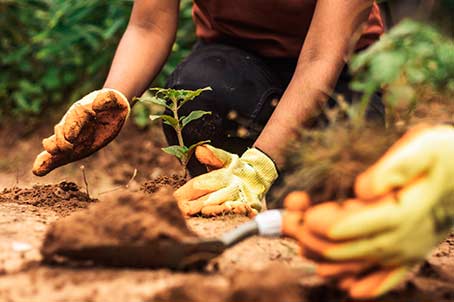
The danger posed by poisonous plants It is often difficult to determine. The content of the active ingredient can fluctuate greatly within the same species, from one plant to another. Therefore, it is essential to stay away from them.
Therefore, throughout this article, you will learn about some poisonous plants for you to be careful.
The 6 poisonous plants you should be careful around
Yew
Yew is a tree species that is very shade-tolerant and can survive well into old age. All parts of this plant are toxic and can, in the worst case scenario, lead to death.
Especially the seeds of this toxic plant are dangerous and should not be consumed under any circumstances.
Only the red berries are harmless. When the yew poison is consumed, the pupils dilate and problems with the digestive tract, such as vomiting and diarrhea, begin.
Other symptoms of poisoning are a reddish coloration of the lips, an accelerated heart rate, which, however, quickly decreases again and can lead to heart failure.
After eating parts of the yew plant, emergency services should be contacted immediately. Deliberately induced vomiting is advisable, as is a sufficient supply of water.
Oleander
The colorful flowers of the oleander adorn many gardens. Unfortunately, this also attracts children who could taste the plant if they play unsupervised in the garden.
In the leaves, the concentration of the poison is particularly high. External symptoms of poisoning, which manifest as redness, itching or even irritation of the skin, can be caused by contact with the skin.
Consuming just one leaf can cause symptoms of poisoning. Headaches, general gastrointestinal complaints and cramps are often the result.
In addition, the pupils become larger, the pulse weakens and circulation is impaired. Consuming a large amount of the poisonous plant can lead to death, as the poison causes heart rhythm disturbances, which can lead to cardiac arrest.
Adequate hydration is especially important in case of oleander poisoning. Also contact an emergency doctor immediately.
Boxwood
Boxwood is one of the most commonly planted ornamental and useful plants in gardens, especially because it is considered an undemanding plant and requires little care. However, the roots and leaves are very toxic, even in small quantities, when consumed.
Specific substances make boxwood so dangerous because they act as nerve toxins. Thus, the symptoms of poisoning are initial states of excitement, followed by cramps and tremors, and even symptoms of paralysis.
Accompanying symptoms are often nausea, vomiting, and diarrhea. Blood pressure may also drop, which in the worst case can lead to circulatory collapse and even death.
At a low dose, the body can break down the toxic substances itself. However, there is no antidote.
If poisoning has occurred, plant parts that have not yet been swallowed should be spat out immediately and emergency services should be called.
Brugmansia suaveolens (trumpet-shaped flower)
Thanks to its huge trumpet-shaped flowers, this plant is one of the most popular in gardens. Despite its beauty, you should not touch or consume this plant. This is because eating the seeds can be life-threatening.
The lethal dose for children is 15 to 20 seeds of the plant, as they have a strong effect on the parasympathetic nervous system. Blood vessels expand and the heartbeat accelerates, which has an effect on circulation.
Symptoms of poisoning caused by this plant include agitation, vomiting, diarrhea, dry mucous membranes, hoarseness, visual disturbances, high pulse, and convulsions. Hallucinations may also occur. In any case, poisoning can be fatal.
An important first aid measure is to induce vomiting to eliminate the seeds and absorb plenty of fluids.
Additionally, you should immediately dial 911 and ask at a poison control center what to do until an emergency doctor arrives.
Narcissus
Daffodils bloom in spring and are a bright splash of color in any garden. However, all parts of this plant are toxic.
Even during skin contact, symptoms of poisoning such as inflammation or rash may occur.
When eating parts of the plant, symptoms such as nausea with vomiting, diarrhea, tremors, cramps, paralysis or even heart rhythm disturbances and heart failure may occur.
Since the daffodil bulb is easily confused with a conventional cooking onion, the two varieties should be kept separate from each other.
In case of poisoning, immediately contact a poison control center and dial 911. As a first aid measure, you should drink plenty of fluids.
Belladonna
The black berries of belladonna look juicy, but they are not suitable for consumption! Although the sweet taste hides the toxic effect, the berries are highly toxic – both to humans and animals.
Redness may occur upon skin contact with the plant. Known symptoms of poisoning from eating the berries include dry mucous membranes, restlessness, and even hallucinations.
Hyperventilation and cramps may also occur. For children, the fatal dose is 3 to 5 berries. Adults can die from eating 10 to 20 berries.
If not all the berries have been swallowed, the remaining berries should always be spit out. Also provide the body with plenty of water. See a doctor immediately or call an emergency doctor.

